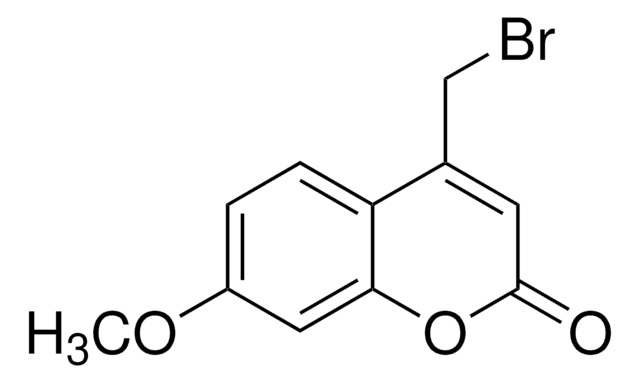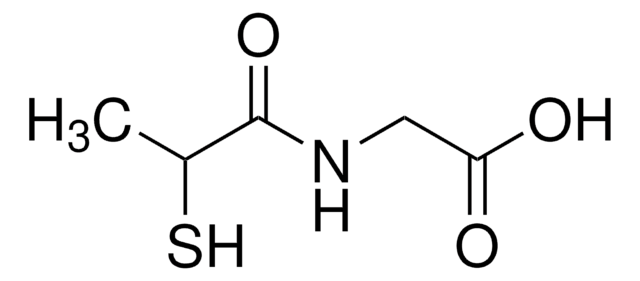F4383
7-Fluorobenzofurazan-4-sulfonic acid ammonium salt
≥98%
Sinonimo/i:
4-Fluoro-7-sulfobenzofurazan ammonium salt, 7-Fluorobenz-2,1,3-oxadiazole-4-sulfonic acid ammonium salt, Ammonium 7-fluorobenzofurazan-4-sulfonate, SBD-F
About This Item
Prodotti consigliati
Saggio
≥98%
Condizioni di stoccaggio
protect from light
Fluorescenza
λex 380 nm; λem 515 nm
Temperatura di conservazione
−20°C
Stringa SMILE
N.OS(=O)(=O)c1ccc(F)c2nonc12
InChI
1S/C6H3FN2O4S.H3N/c7-3-1-2-4(14(10,11)12)6-5(3)8-13-9-6;/h1-2H,(H,10,11,12);1H3
JXLHNMVSKXFWAO-UHFFFAOYSA-N
Cerchi prodotti simili? Visita Guida al confronto tra prodotti
Descrizione generale
Applicazioni
Codice della classe di stoccaggio
11 - Combustible Solids
Classe di pericolosità dell'acqua (WGK)
WGK 3
Punto d’infiammabilità (°F)
Not applicable
Punto d’infiammabilità (°C)
Not applicable
Dispositivi di protezione individuale
Eyeshields, Gloves, type N95 (US)
Certificati d'analisi (COA)
Cerca il Certificati d'analisi (COA) digitando il numero di lotto/batch corrispondente. I numeri di lotto o di batch sono stampati sull'etichetta dei prodotti dopo la parola ‘Lotto’ o ‘Batch’.
Possiedi già questo prodotto?
I documenti relativi ai prodotti acquistati recentemente sono disponibili nell’Archivio dei documenti.
I clienti hanno visto anche
Il team dei nostri ricercatori vanta grande esperienza in tutte le aree della ricerca quali Life Science, scienza dei materiali, sintesi chimica, cromatografia, discipline analitiche, ecc..
Contatta l'Assistenza Tecnica.












